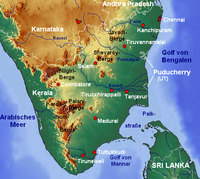
The harmful algae, Cochlodinium polykrikoides and Aureococcus anophagefferens, elicit stronger transcriptomic and mortality response in larval bivalves (Argopecten irradians) than climate change stressors
Sign Up to like & getrecommendations! Published in 2019 at "Ecology and Evolution"
DOI: 10.1002/ece3.5100
Abstract: Abstract Global ocean change threatens marine life, yet a mechanistic understanding of how organisms are affected by specific stressors is poorly understood. Here, we identify and compare the unique and common transcriptomic responses of an… read more here.
Keywords: polykrikoides aureococcus; algae cochlodinium; larvae exposed; argopecten irradians ... See more keywords

Resting Stage of Plankton Diversity from Singapore Coastal Water: Implications for Harmful Algae Blooms and Coastal Management
Sign Up to like & getrecommendations! Published in 2017 at "Environmental Management"
DOI: 10.1007/s00267-017-0966-5
Abstract: Resting strategies of planktonic organisms are important for the ecological processes of coastal waters and their impacts should be taken into consideration in management of water bodies used by multiple industries. We combined different approaches… read more here.
Keywords: water; resting stage; management; harmful algae ... See more keywords

In-situ active formation of carbides coated with NPTiO2 nanoparticles for efficient adsorption-photocatalytic inactivation of harmful algae in eutrophic water.
Sign Up to like & getrecommendations! Published in 2019 at "Chemosphere"
DOI: 10.1016/j.chemosphere.2019.04.120
Abstract: Harmful algae pollution in eutrophic waters represents one of the most serious problems in natural water environment. Adsorption assisted photocatalytic inactivation is often considered as a promising method to achieve the clean-up of harmful algae… read more here.
Keywords: adsorption; water; eutrophic water; harmful algae ... See more keywords

Harmful algae niche responses to environmental and community variation along the French coast.
Sign Up to like & getrecommendations! Published in 2020 at "Harmful algae"
DOI: 10.1016/j.hal.2020.101785
Abstract: Distribution, frequency and intensity of harmful phytoplanktonic species are impacted by changes in environmental conditions. In the Bay of Brest, Alexandrium minutum has been responsible for several harmful algal blooms (HABs) associated with toxin production… read more here.
Keywords: environmental conditions; community; harmful algae; chlorophorum ... See more keywords

Functional trait thermal acclimation differs across three species of mid-Atlantic harmful algae.
Sign Up to like & getrecommendations! Published in 2020 at "Harmful algae"
DOI: 10.1016/j.hal.2020.101804
Abstract: Characterizing the thermal niche of harmful algae is crucial for understanding and projecting the effects of future climate change on harmful algal blooms. The effects of 6 different temperatures (18-32 °C) on the growth, photophysiology, and… read more here.
Keywords: functional trait; temperature; toxicity; harmful algae ... See more keywords

Dawn of the dinophytes: A first attempt to date origin and diversification of harmful algae.
Sign Up to like & getrecommendations! Published in 2020 at "Harmful algae"
DOI: 10.1016/j.hal.2020.101871
Abstract: Unicellular dinophytes include a considerable number of harmful algae and potent producers of toxins. The dinophyte fossil record is one of the richest among protists and indicates a geologically old origin of the group dating… read more here.
Keywords: fossil record; origin; diversification; date ... See more keywords

Continuous and Synoptic Assessment of Indian Inland Waters for Harmful Algae Blooms.
Sign Up to like & getrecommendations! Published in 2022 at "Harmful algae"
DOI: 10.1016/j.hal.2021.102160
Abstract: Cyanobacterial Harmful Algal Blooms (CyanoHABs) are progressively becoming a major water quality, socioeconomic, and health hazard worldwide. In India, there are frequent episodes of severe CyanoHABs, which are left untreated due to a lack of… read more here.
Keywords: cyanokhoj; country; continuous synoptic; assessment ... See more keywords

Harmful Algae and Oceanographic Conditions in the Strait of Georgia, Canada Based on Citizen Science Monitoring
Sign Up to like & getrecommendations! Published in 2021 at "Frontiers in Marine Science"
DOI: 10.3389/fmars.2021.725092
Abstract: In British Columbia (BC), harmful algal blooms (HABs) regularly cause severe economic losses through finfish mortalities and shellfish harvest closures due to toxin accumulation, gill damage, or hypoxia. As there is no routine governmental monitoring… read more here.
Keywords: strait georgia; science; harmful algae; monitoring ... See more keywords

Harmful Algae Impacting Aquatic Organisms: Recent Field and Laboratory Observations
Sign Up to like & getrecommendations! Published in 2023 at "Toxins"
DOI: 10.3390/toxins15050339
Abstract: Algal blooms formed by some phytoplankton species can produce toxins or alter environmental conditions that can affect aquatic organisms and water quality, with impacts on the aquaculture and fisheries industries that can pose a risk… read more here.
Keywords: organisms recent; algae impacting; aquatic organisms; recent field ... See more keywords